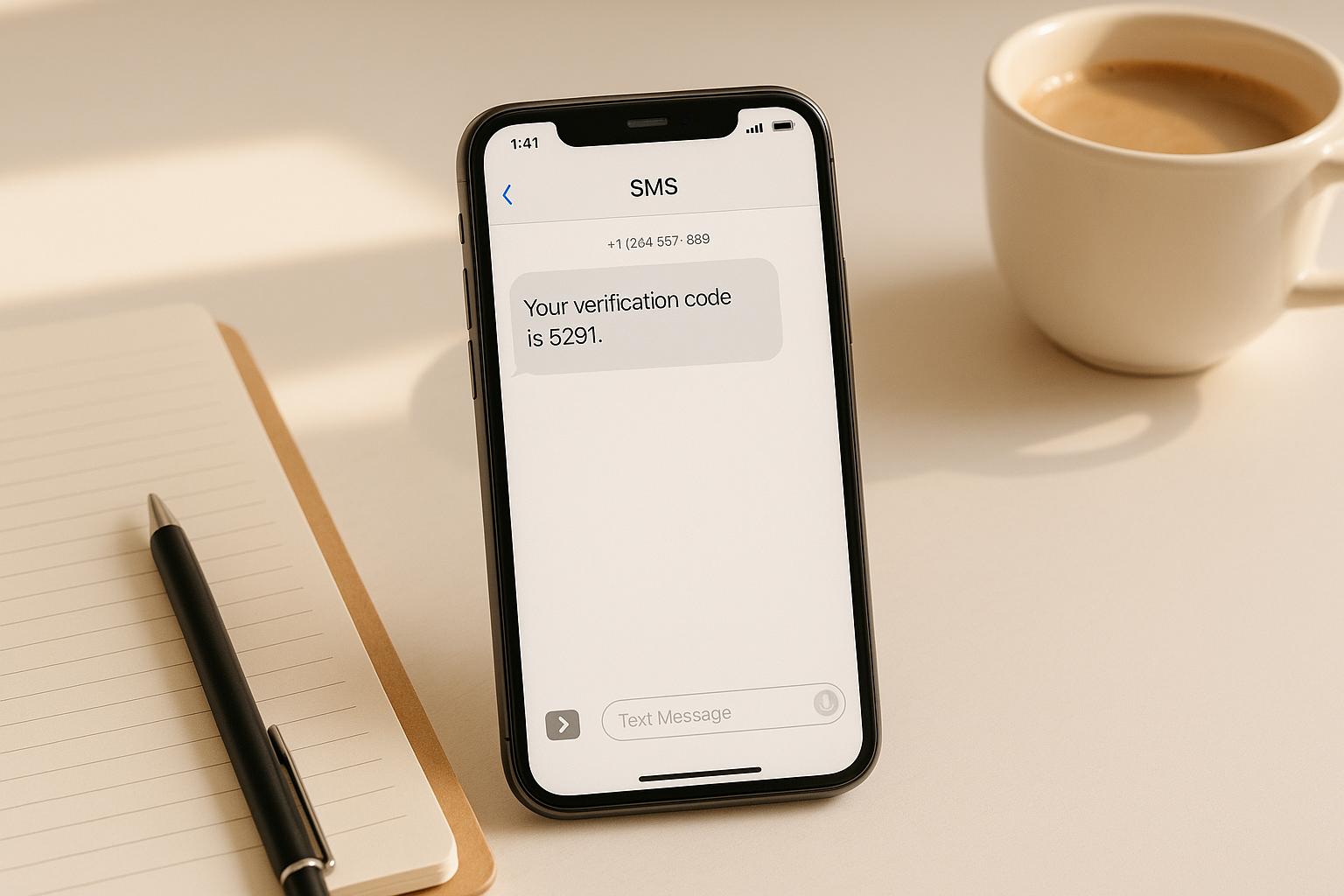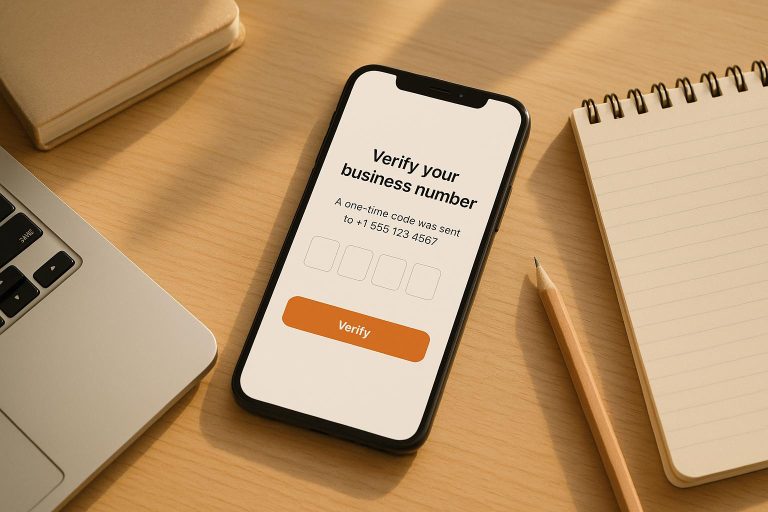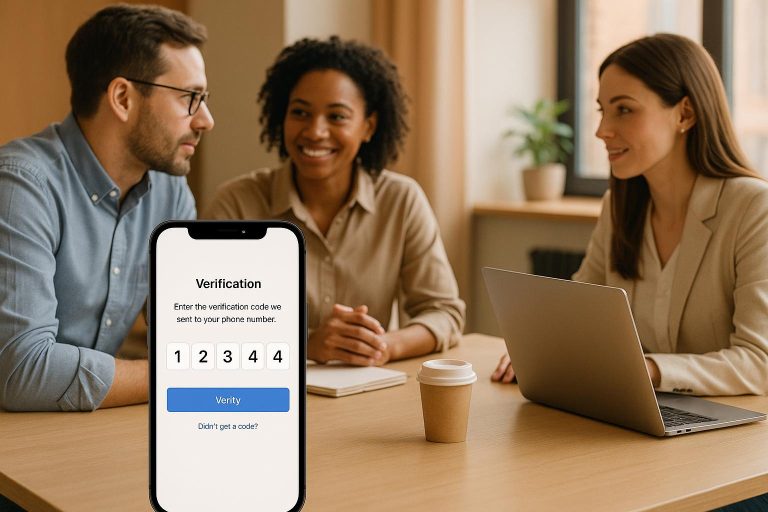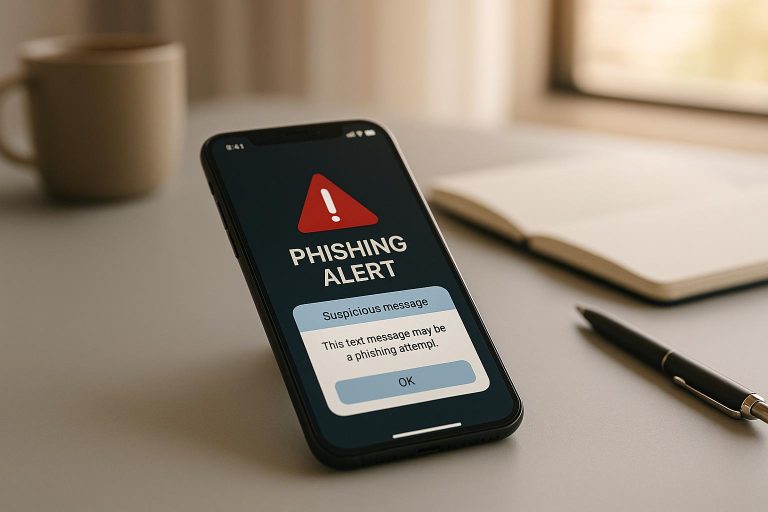5 Common SMS Verification Problems and Solutions
Here are 5 common SMS verification issues and simple ways to fix them:
- VoIP Numbers Get Blocked: Many platforms reject VoIP numbers because they’re easy to misuse.
Solution: Use physical SIM-based numbers for better reliability. - Personal Number Risks: Using your personal number can expose you to spam and data breaches.
Solution: Use a separate, dedicated number for verifications. - Codes Don’t Arrive: Network congestion, filters, or weak signals can block SMS codes.
Solution: Opt for services that partner with reliable carrier networks. - Location Restrictions: Traveling? Some platforms block SMS from outside specific regions.
Solution: Use U.S.-based SIM numbers that work globally. - Security Threats: SIM swapping and SMS interception can compromise your accounts.
Solution: Use services with encryption and real-time monitoring.
Quick Fix: A service like JoltSMS offers SIM-based U.S. numbers with a 99.9% delivery success rate and global compatibility to solve these problems effectively.
Not receiving SMS Verification Code Fix (8 Methods)
Problem 1: VoIP Numbers Don’t Work
Many platforms reject VoIP numbers when it comes to SMS verification. As companies strengthen their systems to combat fraud and spam, they often block numbers that are easy to misuse.
Why Platforms Block VoIP Numbers
VoIP (Voice over Internet Protocol) numbers rely on the internet instead of traditional cellular networks. While convenient, they come with certain vulnerabilities that make them a target for restrictions. Here’s why:
- Easy to mass-produce: Fraudsters can create large volumes of VoIP numbers in no time.
- Difficult to trace: Unlike physical SIM cards, virtual numbers are harder to track.
- History of misuse: VoIP numbers are frequently linked to spam and fraudulent activity.
Because of these issues, many services prefer to block VoIP numbers altogether.
The Solution: Physical SIM Numbers
Switching to physical SIM numbers can solve these problems. Physical SIM cards provide reliable code delivery, are widely accepted across platforms, and offer better security and privacy.
A great option is JoltSMS, which provides SIM-based U.S. numbers designed for seamless SMS verification. These non-VoIP numbers work with over 1,000 platforms and boast a 99.9% delivery rate, ensuring you avoid the headaches associated with VoIP numbers.
Problem 2: Personal Number Safety
Relying on your personal phone number for SMS verification might seem convenient, but it opens the door to privacy and security issues. Using it exclusively for online verifications is far from ideal.
Why Using Your Personal Number Is Risky
When you provide your personal number for online verifications, it often ends up stored in multiple databases. If those databases are breached, your number could be exposed. Here’s what could happen:
- Data Selling: Some online services sell phone numbers to third parties, putting your privacy at risk [1].
- Unwanted Marketing: Your number might find its way into marketing databases, leading to a flood of unsolicited calls and texts [1].
- Spam Overload: Scammers and advertisers often scrape phone numbers from various platforms, resulting in an avalanche of spam messages and calls [1].
Each new service you verify with your personal number increases your exposure, making it harder to keep your contact information private.
A Smarter Solution: Separate Verification Numbers
To protect your privacy, consider using a dedicated verification number. JoltSMS provides U.S.-based numbers specifically for this purpose, offering several benefits:
- Keeps your personal number completely separate
- Includes a user-friendly dashboard for managing messages
- Offers real-time monitoring and tools for team collaboration
- Supports integrations for seamless functionality
By using a separate number, you can safeguard your personal contact details while ensuring uninterrupted access to essential services. This dedicated number is used exclusively for verification, reducing your exposure to spam and unwanted attention.
Keep your verification number private and limit its use to trusted services for maximum protection.
Problem 3: SMS Codes Not Arriving
When verification codes don’t show up, it can be frustrating and delay access to your account. Understanding what causes these delays is the first step to resolving the issue.
Why SMS Codes Fail
Several technical hiccups can stop SMS verification codes from reaching your phone:
- Network Congestion: High traffic during peak times can slow down carrier networks.
- Carrier Filtering: Some messages get flagged as spam by aggressive filters and never make it through.
- Signal Strength: Poor cellular reception can delay or even block SMS delivery.
- Server Problems: Platform maintenance or technical glitches can disrupt message delivery.
Reliable Carrier Networks
JoltSMS addresses these issues head-on by partnering directly with major U.S. carriers. Their approach includes SIM-based networks boasting a 99.9% delivery rate, instant activation, real-time monitoring, and automated retries. Most verification codes arrive within 30 seconds – even during busy periods.
| Delivery Issue | Impact | Solution |
|---|---|---|
| Network Congestion | Delays | Priority routing |
| Carrier Filtering | Blocked messages | Pre-approved pathways |
| Signal Strength | Failed delivery | Use of multiple carriers |
| Server Problems | Timeouts | Monitoring and retries |
sbb-itb-070b8f8
Problem 4: Location Blocks
Location-based restrictions can make SMS verification a headache, especially for travelers or remote workers who need to access vital services while on the move. These barriers can disrupt legitimate access and create unnecessary frustrations.
International Access Issues
Geographic restrictions complicate SMS verification in several ways:
- Platform Region Locks: Some services limit account creation to specific countries, rejecting verification attempts from outside those regions.
- Carrier Support Variability: Local mobile carriers often fail to reliably deliver international SMS verification codes, leading to errors.
- Cross-Border Messaging Restrictions: Security policies in certain countries block messages from foreign regions, further complicating access.
For users who rely on consistent account access, these challenges can be a major roadblock. Solving this problem requires a service that ensures reliable, global SMS verification.
U.S. Numbers That Work Everywhere
One effective way to bypass these international hurdles is by using dedicated U.S. numbers. JoltSMS offers a solution with its network of real SIM-based U.S. numbers that operate seamlessly across the globe. Here’s how their system stands out:
| Feature | Benefit | Success Rate |
|---|---|---|
| U.S. Carrier Network | Recognized worldwide | 99.9% |
| Real SIM-Based Numbers | Avoids VoIP-related restrictions | 100% |
| Instant Activation | Ready to use in seconds | Under 30 seconds |
| Global Platform Support | Compatible with 1,000+ services | 99.8% |
By using these U.S. numbers, you can avoid the most common location-based issues:
- Universal Acceptance: These numbers are recognized by networks around the world.
- Reliable Delivery: SMS messages are consistently delivered, no matter where you are.
- 24/7 Availability: Numbers remain active across all time zones.
- No Regional Blocks: Easily bypass restrictions without compromising security.
With real SIM-based technology, JoltSMS ensures fast, dependable SMS delivery worldwide, helping you maintain uninterrupted access to your accounts wherever you go.
Problem 5: SMS Security Threats
As SMS verification becomes more common, attackers are finding new ways to exploit its weaknesses. Being aware of these risks is key to safeguarding your accounts and personal data.
SMS and SIM Attacks
There are several ways attackers target SMS verification:
- SIM Swapping: This happens when criminals trick mobile carriers into transferring your phone number to a new SIM card, giving them control of your number.
- SMS Interception: Hackers can intercept SMS messages while they’re being transmitted, gaining access to sensitive information.
These risks highlight the need for robust security measures to protect SMS-based systems.
Strengthening SMS Protection
JoltSMS employs a multi-layered security approach to protect its verification process. These measures work hand-in-hand with the benefits of using SIM-based numbers:
- Real-time Monitoring: The system identifies unusual patterns, like multiple rapid verification attempts or activity from unexpected locations, and flags them immediately.
- Dedicated Number Infrastructure: By using dedicated numbers, your personal phone number stays private and secure.
- Data Encryption: Verification codes are encrypted to block interception attempts.
Tips for Users:
- Avoid sharing verification codes with anyone.
- Use different phone numbers for various services.
- Take advantage of additional security features when available.
- Regularly check your account for any unusual activity.
Conclusion: Better SMS Verification
SMS verification plays a key role in securing accounts, even when faced with common challenges. Opting for non-VoIP, SIM-based numbers enhances reliability across platforms while keeping security strong.
Using dedicated verification numbers adds an extra layer of protection, reducing risks of data exposure. For example, a U.S.-based e-commerce business reported a 98% delivery success rate and improved security over six months by implementing this approach [2].
These strategies work together to tackle verification challenges effectively. JoltSMS ensures reliable SMS delivery with features like:
- Real-time threat monitoring
- Carrier network optimization
- Global number accessibility
FAQs
How can I keep my personal phone number private during SMS verification to avoid spam and security risks?
If you’re looking to keep your personal phone number private during SMS verification, using a temporary or secondary number is a smart move. This approach minimizes the risk of spam, unwanted messages, or your number being exposed in a data breach. Temporary numbers let you complete verifications without putting your primary number at risk.
It’s also important to choose a reliable service that values privacy and security. By doing so, you can handle verifications efficiently while keeping your personal information safe.
Why don’t SMS verification codes arrive, and how can I fix this?
There are several reasons why SMS verification codes might not show up. These could include using VoIP numbers, which are often restricted, network delays affecting code delivery, or privacy settings on your device that block messages.
To address these issues, consider using a regular, non-VoIP number for verification, as these are generally more dependable. Also, double-check your phone’s messaging settings, ensure a stable network connection, and confirm that the phone number you entered is accurate. These steps can help make the verification process run more smoothly.
How can I protect myself from SMS security risks like SIM swapping and interception?
To protect yourself from SIM swapping and SMS interception, start by setting up a strong, unique PIN or password for your mobile account. Many mobile carriers also provide extra security options, like port-out protection, which adds an extra layer of verification before your number can be transferred to another SIM card.
Be mindful about sharing sensitive information through SMS, and stay alert for phishing attempts designed to steal your personal details. Whenever possible, switch to two-factor authentication (2FA) apps instead of relying on SMS-based codes for securing important accounts. Taking these precautions can go a long way in minimizing the risks associated with SMS-related attacks.







